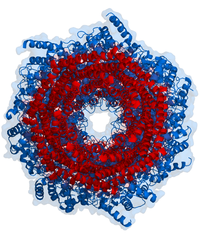
Photo from wikipedia
An increasing number of patients with cancer are being treated with immune checkpoint inhibitors. Consequently, the incidence of immune checkpoint inhibitor-related myocarditis has been increasing. Nonetheless, the diagnostic criteria for… Click to show full abstract
An increasing number of patients with cancer are being treated with immune checkpoint inhibitors. Consequently, the incidence of immune checkpoint inhibitor-related myocarditis has been increasing. Nonetheless, the diagnostic criteria for the immune checkpoint inhibitor-related myocarditis have not been sufficiently established. Therefore, the real-world incidence or prevalence of immune checkpoint inhibitor-related myocardial damage remains unknown. This was a single-center cohort study that included 100 patients admitted for immune checkpoint inhibitor therapy for any type of cancer. The patients underwent monthly measurement of cardiac troponin I and N-terminal pro-brain natriuretic peptide levels with electrocardiography. Additionally, echocardiography was performed every 3 months. Our protocol was continued until 6 months after the initiation of immune checkpoint inhibitors. We defined immune checkpoint inhibitor-related myocardial damage as an increase in cardiac troponin I levels by >0.026 ng/mL and/or a decrease in the left ventricular ejection fraction by >10% to <53% on echocardiography. The mean patient age was 64 years; 71% were men. The most commonly used immune checkpoint inhibitor was nivolumab (47%), followed by pembrolizumab (29%). Overall, 5% of patients received combination therapy. Among 100 patients, 10 (10%) were diagnosed with immune checkpoint inhibitor-related myocardial damage. Among them, five patients underwent endomyocardial biopsy. Of these patients, four were histopathologically observed to have lymphocyte infiltration in their myocardium. In conclusion, serial cardiac troponin I measurement during immune checkpoint inhibitor treatment could help detect early-phase myocardial damage. The prevalence of myocardial damage was much higher than previously expected.
Journal Title: PLOS ONE
Year Published: 2022
Link to full text (if available)
Share on Social Media: Sign Up to like & get
recommendations!